Photographer Access: Essential Guide to Press Passes & Credentials
Updated On: October 23, 2025 by Aaron Connolly
Understanding Photographer Access
Photographer access shapes where we can go and what we get to shoot at events, venues, and those places with tight restrictions.
This access shifts a lot depending on your credentials, the event itself, and the permissions you’ve managed to get through passes or agreements.
Definition and Importance
Photographer access just means having the go-ahead to take photos in certain spots or during specific events.
That includes getting into places most people can’t, photographing people, and catching moments that regular attendees never see.
Access really matters because it changes the kind of photos we can make.
Without the right access, we’re going to miss those big moments and it’s tough to tell a full story with our images.
If you’re into event photography, access can literally mean the difference between being stuck behind a crowd or getting right up near the stage.
Documentary photographers especially depend on access to build trust and capture those genuine, real-life moments.
But access isn’t just about getting through a door.
We also need to build relationships and get permission from people before we photograph them or their stories.
Types of Photographer Access
Photographers can get several types of access, all with their own rules and perks.
Press passes let us into newsworthy events and usually get us into media-only areas.
You’ll almost always need to show proof of publication or a real assignment from a media outlet.
Media credentials go a bit further than press passes and can cover multiple events or ongoing access to an organisation.
Sports teams, government buildings, and big venues hand these out.
Event photography passes are for private events—think weddings, company parties, or concerts.
These usually come straight from the event organiser.
Guest access is the most basic.
It typically lets you view and download small, web-sized images but blocks you from getting high-res downloads.
Every type of access has its own responsibilities and limits.
We really need to respect those if we want to keep working professionally.
Photographer Access at Events
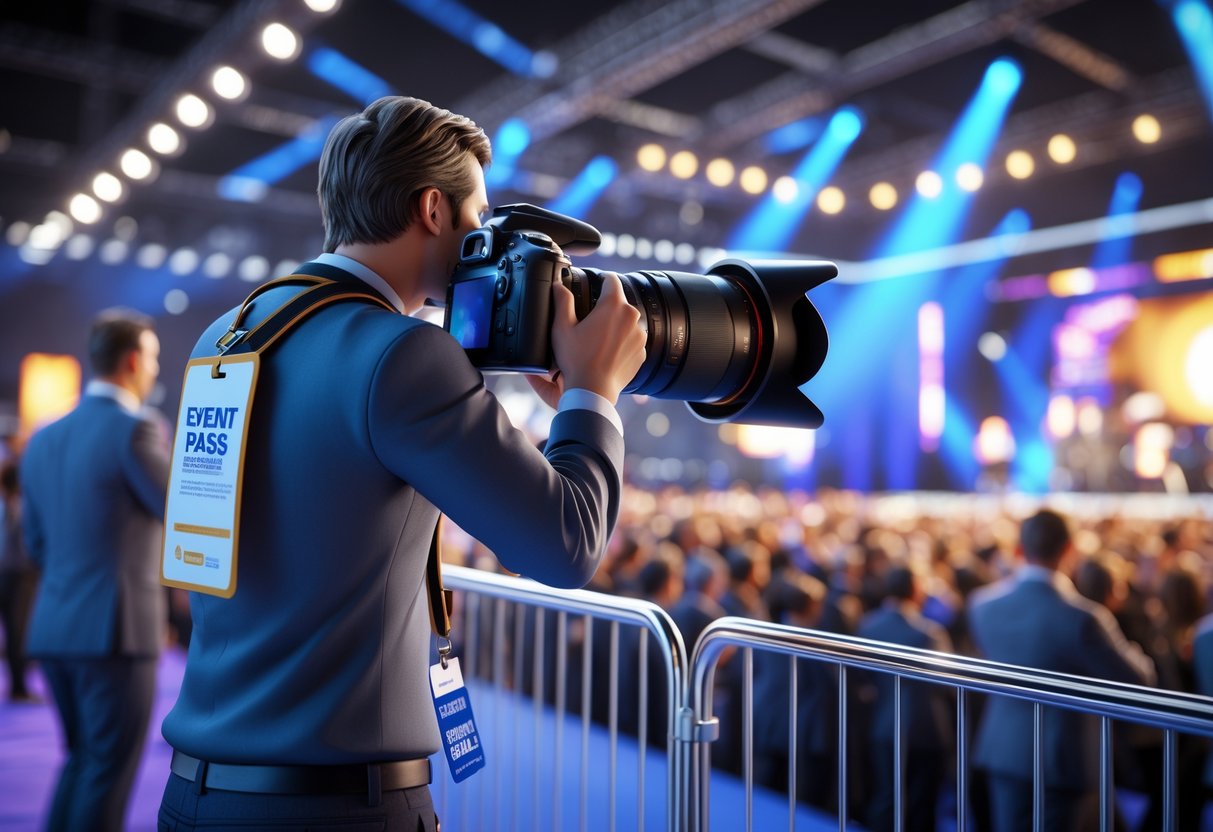
If you want to get into exclusive event areas, you’ll need the right press credentials or a photo pass.
Most of the time, you’ll only have permission to shoot the first three songs at concerts or within certain time slots at other venues.
Start small—local events are way easier to get into.
Build up a portfolio that proves you can handle bigger gigs.
Music and Concert Venues
Music venues almost always stick to the “first three songs, no flash” rule.
You’ll need to reach out to the band’s management, the venue, or the promoter to ask for a photo pass.
Start with smaller venues.
Local bars and clubs are much more open to new photographers than big concert halls.
Try messaging the venue manager and offer to shoot a show in exchange for portfolio shots.
You can also contact bands directly on social media or through their websites.
A lot of up-and-coming artists love having professional photos for their promo needs.
Here’s what you’ll need:
- A real camera (no phones or cheap point-and-shoots)
- A portfolio with live music shots
- A clear badge holder for your media pass
- Knowledge of the venue’s rules
Most venues will ask you to leave the photo pit after three songs.
Sometimes you can keep shooting from the audience, but always double-check before you do.
Sports Events
Access for sports photography can be all over the place.
Local school games and community matches usually welcome photographers.
Big leagues—like Premier League or international events—will want to see established media credentials.
Start with grassroots sports.
Reach out to local clubs or teams.
They often want photo coverage for their websites or socials.
Professional sports venues will expect:
- Accreditation from a recognised media outlet
- Proof of insurance
- The right telephoto lenses (for safety)
- An application submitted well ahead of time
You’ll usually get:
- Access to photographer zones
- Sideline spots during certain periods
- Pre and post-match areas for arrivals
Sports venues can be strict about safety.
You’ll need the right gear and have to follow instructions from marshals at all times.
Conferences and Festivals
Festivals and conferences often have different access levels based on your media status.
Press credentials might get you backstage, while a standard photo pass may only get you into public areas.
Apply early.
Big festivals get swamped with media requests.
Some want applications 3-6 months in advance.
Festival access often includes:
- Photo pit access for headliners
- Opportunities for artist interviews
- Behind-the-scenes documentary shots
- Multi-day coverage with new credentials each day
You’ll usually need:
- A letter from your publication
- A relevant portfolio
- Public liability insurance
- A valid press card or media ID
Conference photography usually means taking photos of speakers, networking, and exhibition spaces.
It’s usually easier to get access than at music festivals, but you still need to look professional.
Role of Press Passes in Photographer Access
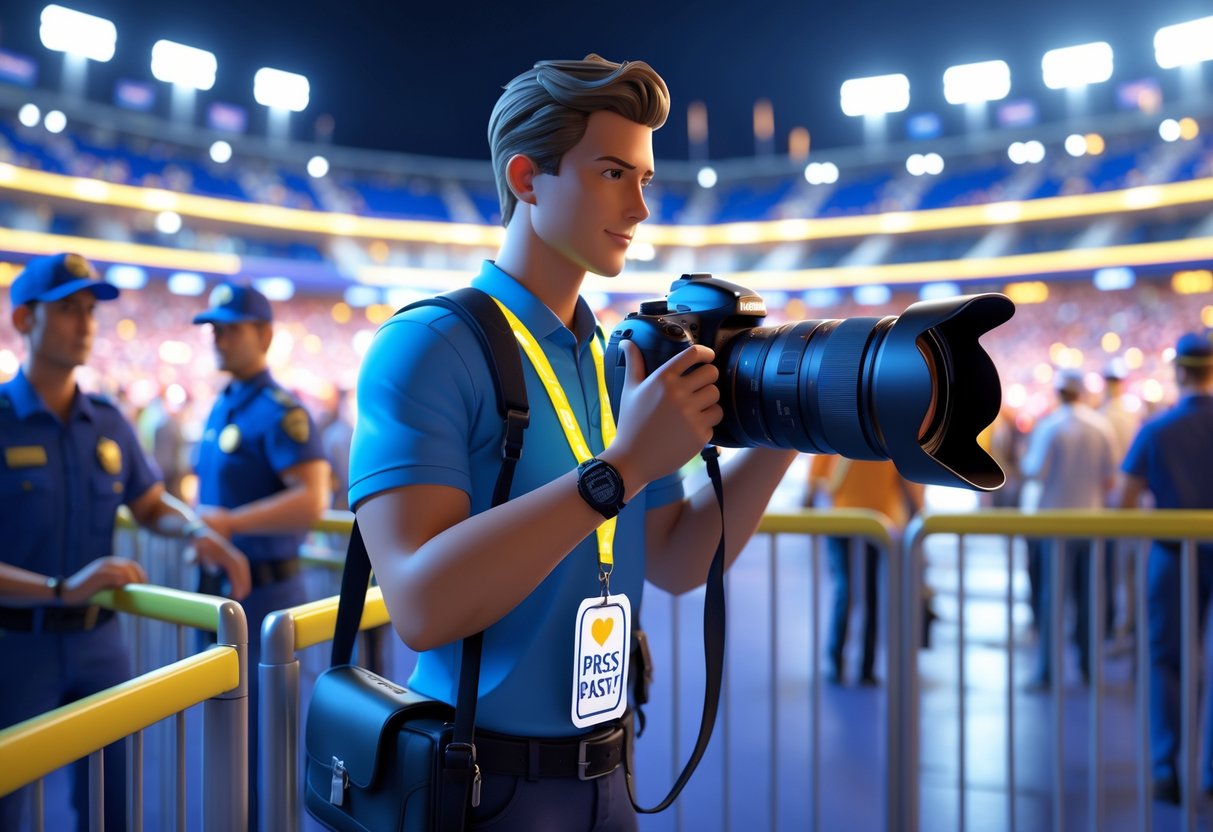
Press passes are pretty much the golden ticket for getting into exclusive areas at esports tournaments, conventions, and big competitions.
They prove you’re legit and open doors to restricted zones where the best shots happen.
What Is a Press Pass?
A press pass is an official credential that tells everyone you’re a working photographer or journalist.
It’s usually a card, badge, or sticker that staff will recognise as proof of your media status.
Press passes come in a bunch of formats.
Some are laminated cards with your photo.
Others are stickers or wristbands with RFID chips to stop fakes.
They’ll usually show:
- Your name and publication
- Event info and dates
- Security features like holograms or RFID
- “PRESS” or “MEDIA” clearly printed
You should always wear your pass on a lanyard.
Clear badge holders keep them from getting ruined or falling off if they’re stickers.
Organisers often use different colours or designs for each day of multi-day events.
That way, security can spot current passes and stop people from reusing old ones.
Benefits of Press Passes
Press passes give you access to places regular fans can’t go.
At esports events, this usually means the photo pit by the stage, backstage, or sometimes even player warm-up rooms.
Perks include:
- Photo pit access – Shoot from the front during matches
- Backstage entry – Get behind-the-scenes shots
- Interview chances – Attend press conferences or chat with players
- Technical areas – Snap the production crew in action
Most esports events have a rule like traditional sports: you can shoot from the pit for the first few rounds, then security will move you elsewhere.
Press passes also help you look professional when you approach teams or event staff.
It shows you’re not just a fan with a camera.
Sometimes you’ll get extra perks—priority entry, special WiFi for uploads, or a press room with snacks and workspace.
Press Pass vs. Media Pass
People use “press pass” and “media pass” almost interchangeably, but there are small differences depending on who’s giving them out.
| Press Pass | Media Pass |
|---|---|
| Given by press organisations | Usually event-specific |
| Can cover multiple events | Tied to a single event or venue |
| Focuses on journalism | Covers broader media, including content creators |
| Traditional print/broadcast | Includes digital and streaming |
Press passes usually come from big news outlets or press groups.
Media passes are more often handed out by event organisers to a wider group of creators.
In esports, the difference doesn’t matter as much as the access level you get.
Some events offer different tiers—“Media,” “Photo,” “All Access”—with their own privileges.
Heads up: Don’t post photos of your credentials online.
That’s a security risk and looks unprofessional.
Both types of passes prove you’re a real media professional and give you the access you need.
Types of Press Credentials for Photographers
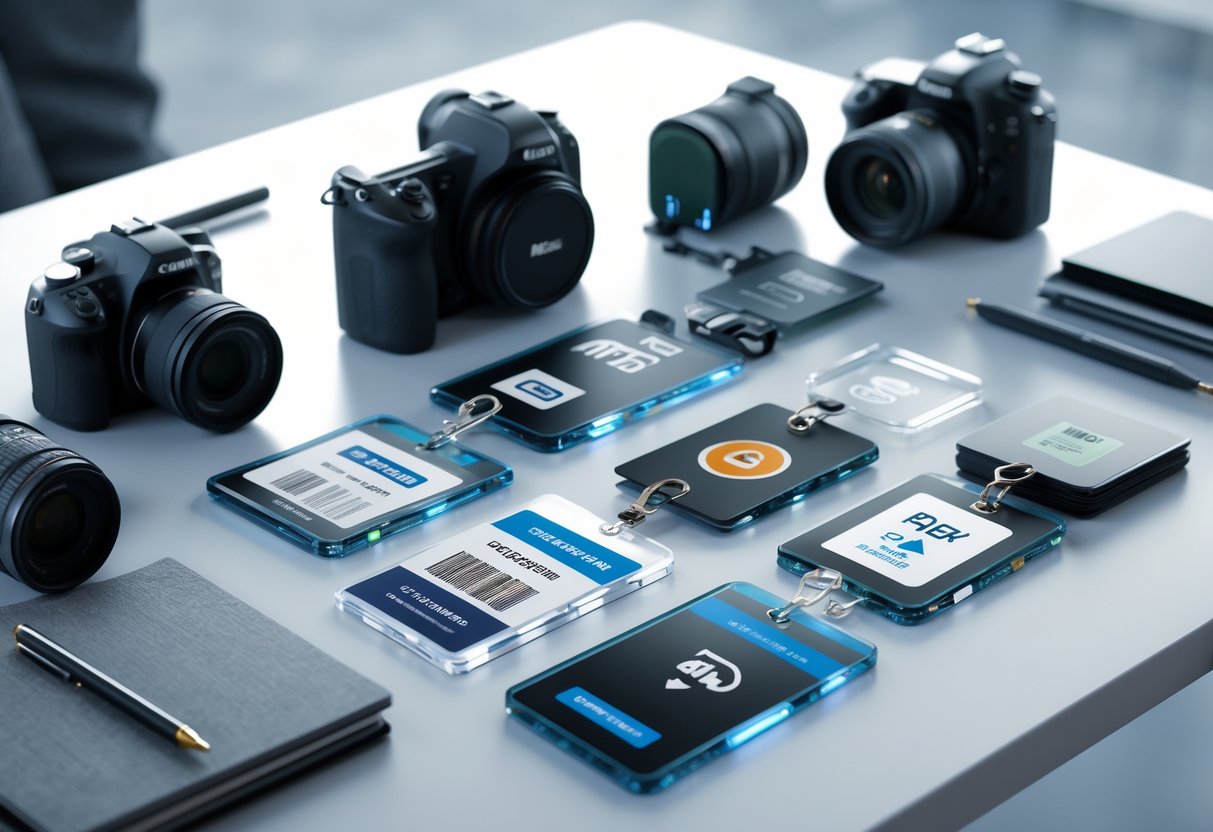
Photographers can get several types of press credentials, each for a different purpose.
Government agencies hand out official passes for news events.
Private groups give media access for their venues.
Freelance credentials offer professional recognition if you’re working solo.
Official Press Credentials
Government agencies—like city or state press offices—give out official press credentials.
These get you into news events, press conferences, or political rallies.
You’ll need to prove you work for a real news organisation.
Usually, that means showing business cards or a letter from your editor.
You’ll typically need:
- Employment with a recognised outlet
- A letter from your editor
- A valid press ID
- A professional portfolio
These passes carry a lot of authority.
Security and event staff recognise them right away.
Official passes often get you reserved seating and access to areas other media can’t reach.
The process can take weeks, so apply early if you want to cover big political events.
Publication-Issued Credentials
Publications make their own press passes for staff photographers.
Newspapers, magazines, and online outlets give these to employees or regular contributors.
These work best for events run by the publication’s partners.
Local newspapers often have deals with sports teams or local venues.
Perks include:
- Faster approval
- Direct contact with editors
- The weight of the publication’s reputation
- Easier renewals
Some events won’t accept these—especially if they only want government or association credentials.
Big-name publications have more pull.
Their passes open more doors than smaller outlets.
Freelancers who work regularly for a publication can often get these passes with a contract or assignment letter.
Freelance Photographer Credentials
Professional photography groups issue credentials to freelancers.
Organisations like the International Freelance Photographer Organisation (IFPO) and US Press Association offer these.
You’ll need to pay membership fees and show a portfolio.
Most charge between £50 and £200 a year.
Freelance credentials give you:
- Access without an employer
- International recognition
- Professional legitimacy
- Networking with other pros
Private events often accept these passes.
Concerts, sports teams, and corporate events frequently honour them.
Some venues are still cautious about freelance IDs.
High-security events may only take government-issued credentials.
Check the group’s reputation before you join.
The older and more established, the better.
Steps to Obtain Press Passes
To get press credentials, you’ll need to build relationships with the right people and show off your skills with a solid portfolio.
The application process usually means filling out paperwork and sticking to strict communication guidelines.
Identifying the Right Contacts
Finding the right contact can honestly be a pain.
For esports events, we need to reach out to specific people inside organisations.
Tournament organisers handle press credentials for the big events—like ESL One or IEM.
Check the official event website for media contact info.
Most tournaments list press officers in their “Media” or “Press” sections.
Team press officers manage access for content about specific teams.
Big esports brands—like Fnatic or G2 Esports—usually have media contacts on their websites.
These are great if you want to photograph certain players or get behind-the-scenes shots.
Venue managers control access to the physical space.
For venues like SSE Arena or Excel London, the venue’s media team often works with tournament organisers.
PR agencies represent a lot of esports brands and events.
Companies like H+K Strategies or Golin manage PR for major gaming companies.
If you build relationships with these agencies, you can unlock access to several events.
Start with smaller gaming centres or local tournaments.
These contacts are more likely to reply and can help you build up your experience and portfolio.
Preparing Your Portfolio
Your portfolio is honestly your most valuable asset when you’re trying to land press credentials. Pick out 15-20 of your best images that really show you can capture the fast-paced energy of gaming events.
Technical skills matter most. Make sure you include shots that prove you can handle the tough lighting you find in gaming venues. Arena lighting changes on the fly at esports events, so show that you can keep up and adapt.
Action photography is essential. Capture players celebrating, focusing intensely, and crowds reacting. These images show you get the emotional highs and lows that make esports so exciting.
Equipment shots add credibility. Toss in photos of gaming setups, tournament stages, and pro gear. That way, you show you understand the technical side of competitive gaming too.
Set up separate galleries for different types of events. Keep your tournament work apart from portraits or casual gaming shots. Press officers want to see the relevant stuff right away.
Professional presentation is crucial. Use something like Adobe Portfolio or Format to show off your work. Skip Instagram or Facebook albums—media coordinators don’t take those seriously.
Application Process
Most press pass applications want specific info well ahead of time. Tournament organizers usually open up applications about 4-6 weeks before big events.
Required documentation includes:
- A link to your professional portfolio
- Press ID or media credentials from past events
- Assignment letter (even if you’re freelance, make it formal)
- Equipment list showing pro camera gear
- Proof that you’re published or affiliated with a media outlet
Application timing is critical. Big tournaments like League of Legends Worlds get flooded with applications. Get yours in as soon as the window opens.
Some events use online forms on platforms like Eventbrite or their own media portals. Others want you to send an email to a specific contact. Always follow the instructions exactly.
Accreditation levels vary a lot. Photo passes might only let you in certain areas or for certain times. Full press credentials usually mean interview and backstage access. Be up front about what you need.
Make a few template applications you can tweak for each event. It saves time and makes sure you never forget anything important.
Follow-Up and Communication
Professional communication can honestly make or break your application. Press officers deal with dozens of requests and remember the people who are clear and polite.
Initial follow-up timing matters. Wait about a week after the deadline before you send a polite check-in. Press officers are busy and usually appreciate a bit of patience.
Use a subject line like “Media Accreditation Follow-up: [Your Name] – [Event Name].” This helps them find your original application fast.
During events, maintain professional relationships. Thank press officers for their help and stick to any restrictions. If you break photo rules, you could get blacklisted for good.
Post-event communication is equally important. Drop a short thank you and include links to your published work from the event. This helps build good will for next time.
Keep a list of all your press contacts and note their preferences. Some like phone calls, others stick to email. Remembering these details helps a lot for future events.
Building real relationships with press officers can lead to invites for more events. In the long run, these connections are worth more than any single press pass.
Freelance Photographers: Access Challenges and Solutions
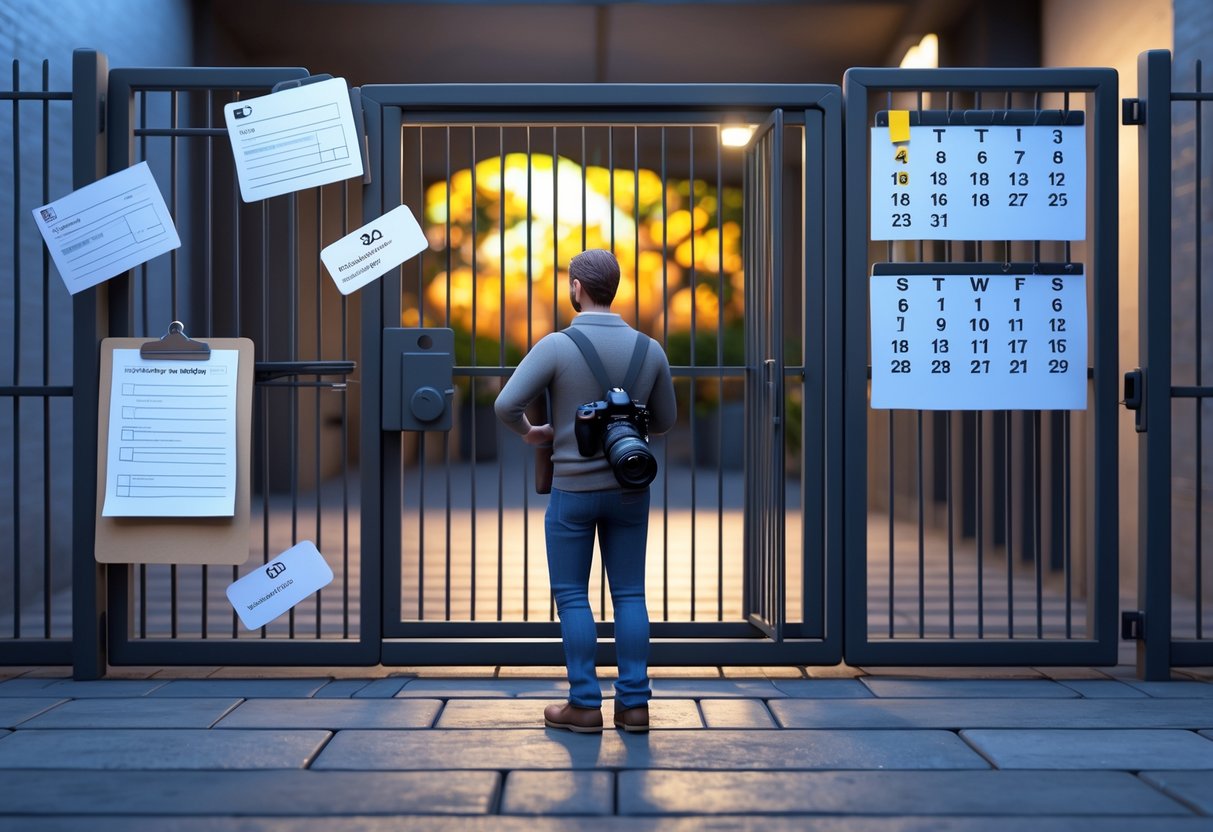
Freelance photographers definitely deal with some unique challenges when trying to get into events, venues, or even just in front of the right people. Building strong professional networks and coming up with creative strategies can help freelancers get around these barriers and land better gigs.
Building Professional Networks
Networking is honestly your best friend if you’re a freelance photographer looking for access. Start with local press associations and photography guilds. These groups often share tips about access and credential opportunities with their members.
Social media platforms can connect you directly with event organizers and PR folks. Follow venues, clubs, and organizations on Instagram and Twitter. Take time to engage with their content before you pitch your services.
Join photography Facebook groups that focus on your area or specialty. People often share last-minute access opportunities and paid gigs there. Wedding photographers, for example, frequently recommend each other when they’re double-booked.
Press clubs and journalist associations sometimes let freelancers join as associates. You can meet editors at networking events, and sometimes they’ll even sponsor your press pass applications.
Build relationships with established photographers who might need second shooters from time to time. These connections can turn into steady access when the main photographer can’t make it.
Gaining Assignments as a Freelancer
Pitch directly to publications instead of waiting for job postings. Look up local newspapers, magazines, and online outlets that cover your beats. Email editors with story ideas that have strong visuals.
A lot of organizations prefer to work with reliable freelancers over random one-timers. Start with smaller events to prove you’re professional. Make sure you’re on time, your gear is solid, and you deliver fast.
Press passes usually need sponsorship from a real publication. Reach out to local newspapers—even the small ones—about covering events for photo credits and experience. Some will give you credentials for specific events.
Corporate clients sometimes struggle with access too. Offer to handle permits and permissions as part of your package. That extra service can justify charging higher rates.
Carve out a specialty niche so you become the go-to person. Photographers who consistently cover local teams usually get better access, since venues know and trust them.
Alternative Access Strategies
Public access photography doesn’t need special permission, but you’ll need to get creative. Shoot from public sidewalks and areas that aren’t restricted. Check property lines in advance with local council maps.
Partner with local businesses that already know the venues. Estate agents, for example, often have access to cool properties for shoots. Wedding planners can introduce you to exclusive spots.
Volunteer photography for charities and community groups helps you build your portfolio and opens doors. Many events welcome pro photos in exchange for usage rights and portfolio pieces.
Try alternative timing if you can’t get in during the main event. Arrive early for setup shots or stay late for breakdown images. Sometimes those moments are even more interesting anyway.
Collaboration with other creatives can get you access you wouldn’t have on your own. Work with videographers, journalists, or bloggers who might have the right passes. Everyone benefits when you refer each other.
Media Passes and Photo Passes Explained
Media passes and photo passes aren’t quite the same thing at esports events. Media passes usually give you broader access, like press areas and backstage, while photo passes are really just for camera access in specific spots during matches.
When to Use Media Passes
We reach for media passes when we need to cover more than just photography. These are best if you’re with an established publication or representing a legit outlet.
Media passes let you into press conferences, interview zones, and media lounges at big tournaments. Sometimes you even get free meals and a dedicated workspace.
Key situations for media passes:
- Multi-day tournament coverage
- Writing reviews in addition to shooting photos
- Doing player interviews
- Live streaming or broadcasting
Tournament organizers usually save media passes for credentialed journalists. You’ll need to show you have editorial plans, not just a photo portfolio.
Venues often ban pro camera gear unless you have the right credentials. A media pass usually takes care of that.
Applying for Photo Passes
We go after photo passes when our main goal is tournament photography. These passes get you into the photographer’s pit near the stage or other designated photo spots.
Essential application elements:
- Name and website of your publication
- Assignment editor contact info
- Portfolio samples
- Specific event coverage plans
Send your request 2-3 weeks before the event. Esports tournaments have limited photo spots, especially for the big matches.
Most photo passes only let you shoot for the first few rounds or certain time slots. You usually can’t shoot the whole match from the pit.
Common photo pass restrictions:
- Only first 10-15 minutes allowed
- No flash
- Specific shooting positions
- Must act professionally
Always go through the official PR contact for the tournament, not the venue staff.
Legal and Ethical Considerations for Photographer Access
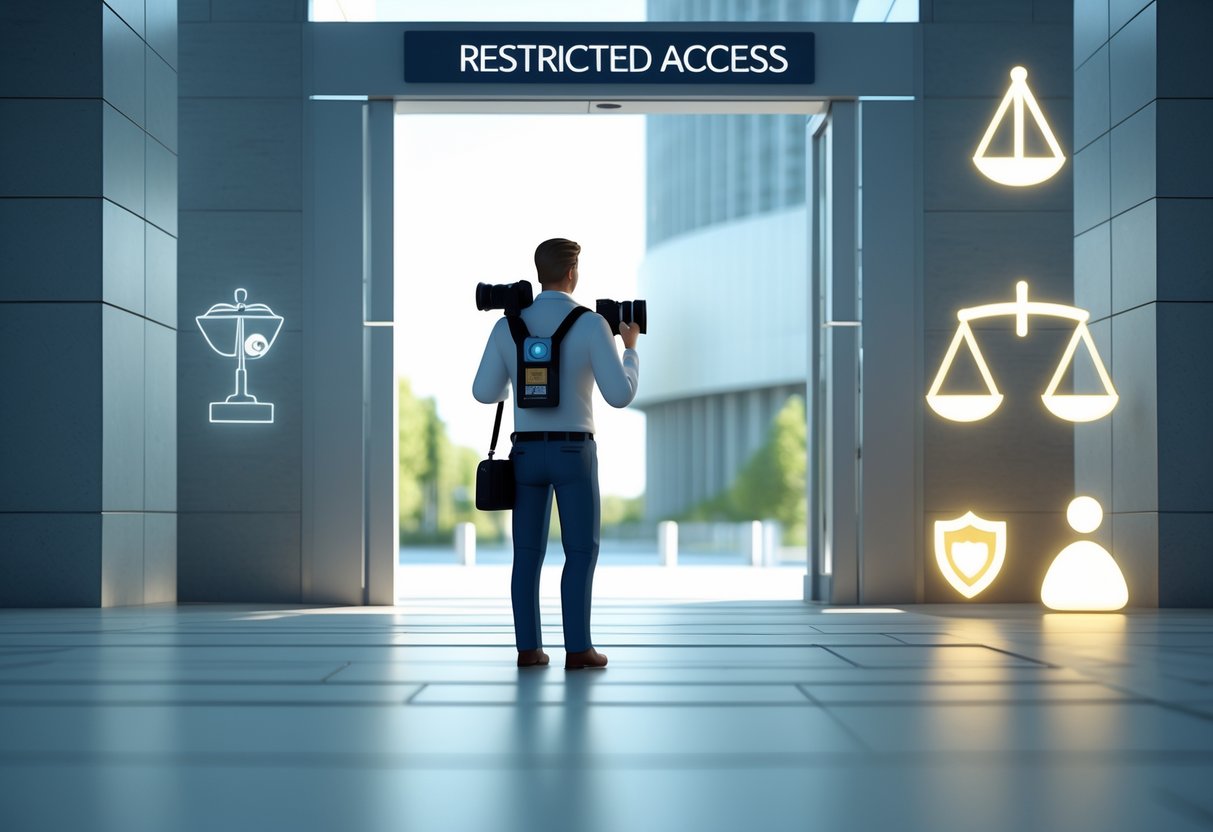
Photographers in esports venues deal with legal rules and ethical guidelines that change depending on where you are and what kind of event it is. Knowing venue restrictions and your professional responsibilities helps you avoid trouble and keeps your reputation solid.
Venue Policies and Restrictions
Most esports venues want to see press credentials or some kind of media accreditation before they let you shoot. Tournament organizers usually handle this through online applications, usually 2-4 weeks before the event.
Press pass requirements often include:
- Valid press ID or media outlet verification
- Equipment insurance paperwork
- Signed code of conduct
- Assigned shooting zones
Big venues like Excel London or Manchester Arena keep photographers in strict zones during matches. Usually, we’re stuck to specific media areas. Flash is banned during play so players don’t get distracted.
Some venues don’t allow tripods or big lenses (over 200mm) for safety. Private gaming centers might also want extra permission from team managers before you shoot players.
Commercial usage restrictions are pretty common. Most venues are fine with editorial coverage but won’t let you sell photos unless you get a separate license. Sponsors sometimes have exclusive rights that limit what you can shoot or sell.
Photographer Rights and Responsibilities
We can legally shoot in public areas of most venues, but that doesn’t cover private gaming spaces or backstage. Model releases are a must if you want to use player images for anything commercial.
Our key responsibilities include:
- Respecting player privacy during downtime
- Sticking to assigned movement paths during matches
- Giving proper credit to venue owners and organizers
- Getting consent for close-ups or portraits
Ethical considerations really matter in esports photography. Don’t snap players during tough emotional moments unless you have permission. Kids under 18 usually need extra consent forms, depending on where you are.
Venue signage and sponsor logos can make copyright tricky. It’s up to us to know which branded stuff needs extra permission before we publish.
Pro photographers carry liability insurance for gear damage and injury claims. It’s honestly essential, especially in packed tournament spaces with expensive equipment everywhere.
Maximising Opportunities with Press Credentials
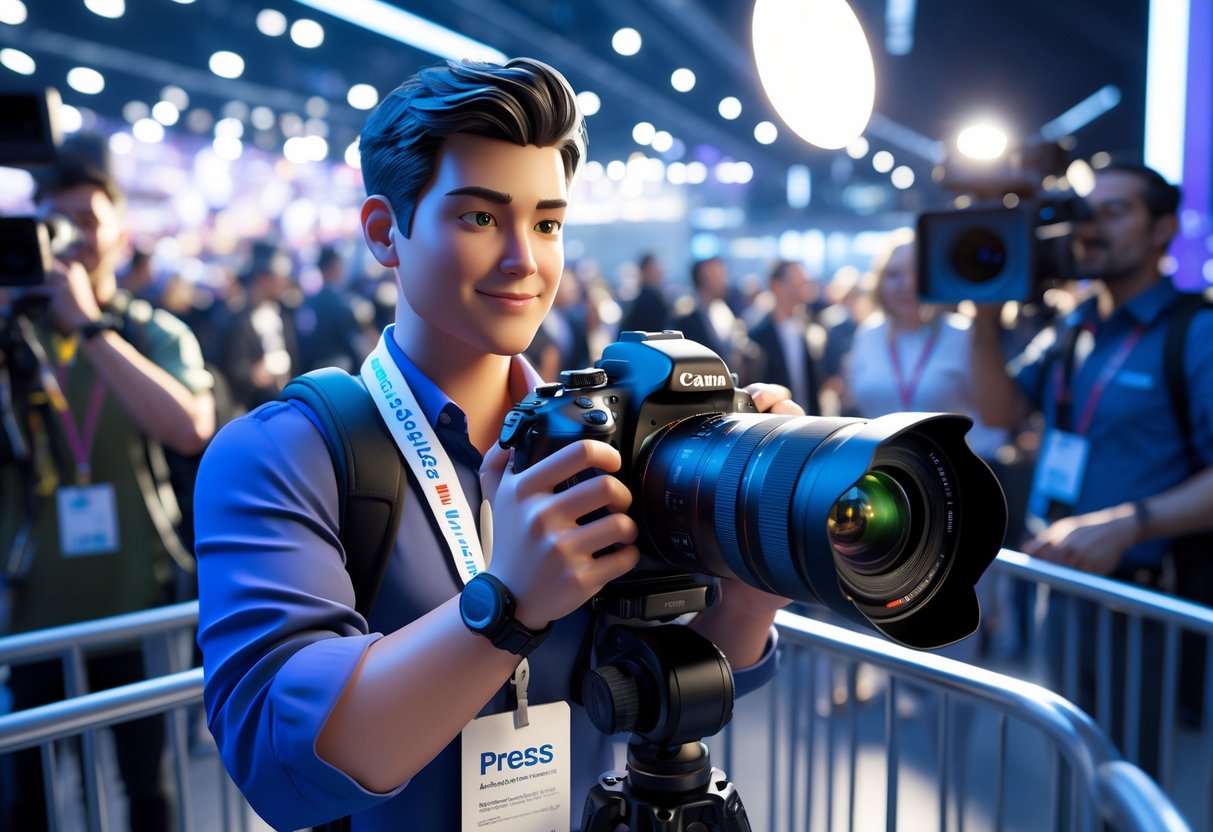
Press credentials unlock exclusive photography opportunities and help you build a professional reputation. They give you access to restricted areas at events and show people in the industry that you mean business.
Portfolio Development
Press credentials let photographers shoot from spots regular attendees can’t reach. At esports tournaments, that could mean pit access, backstage time with players, or VIP zones during ceremonies.
You can capture behind-the-scenes moments that tell deeper stories. Think players prepping before matches, coaches talking strategy, or celebrations in private spaces.
Key portfolio opportunities include:
- Player warm-ups in practice rooms
- Team meetings and strategy sessions
- Victory celebrations in exclusive areas
- Equipment setup and tech prep
Getting a variety of these shots helps you build a stronger, more interesting portfolio. You can show off both the action and the human side of esports.
These exclusive images really highlight your professional skills to potential clients. Organizers and teams often check out portfolios before picking official photographers.
Reputation Building
Having real press credentials tells industry folks you’re a pro. Event organizers, team managers, and sponsors see credentialed photographers as professionals—not just fans with cameras.
You build relationships with key people by showing up and acting professionally. Over time, these connections can land you commissions, staff jobs, or more exclusive access.
Professional benefits include:
- Direct lines to team management
- Networking with other media pros
- Recognition from tournament officials
- Invites to media-only events and briefings
Press credentials also keep you accountable and help you stick to professional standards, which builds trust with event organizers.
With the credibility you gain from proper credentials, new doors open. Teams might hire you for promos, and sponsors could commission content for marketing.
International Photographer Access
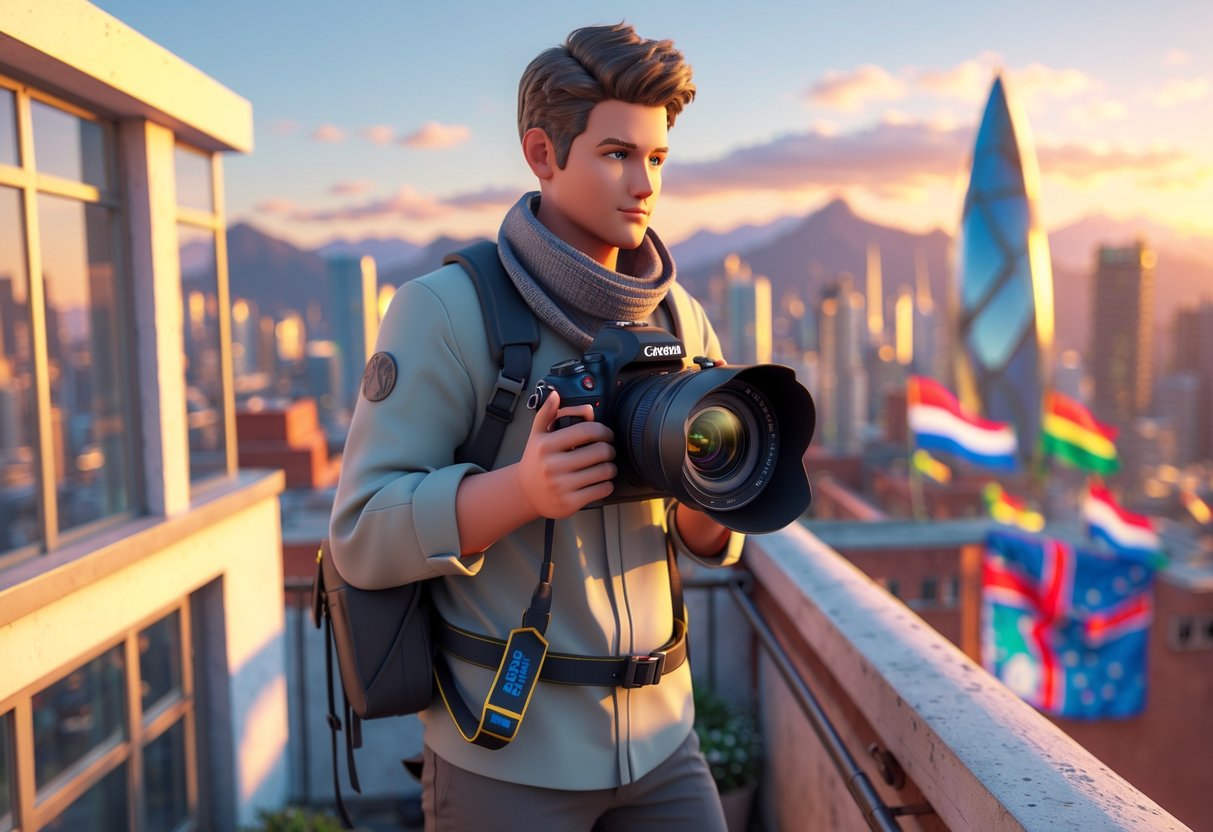
Working as a photographer in another country isn’t as simple as packing your camera and hopping on a plane. You need to figure out local rules and grab the right credentials for each place you visit.
Press passes and international photography cards can get you into places tourists just can’t go.
Access Requirements Abroad
Every country handles professional photographers differently. Some places want you to get special permits if you’re doing commercial work.
Tourist visas almost never cover paid photography jobs. If you’re planning to shoot events for money, you usually need a work visa or a business permit.
Common requirements include:
- A valid passport with the right visa
- Equipment declaration forms at customs
- Insurance for your gear and liability
- Local tax registration if you’re getting paid
Always check local photography laws before your trip. Some countries get strict about what you can photograph.
Military sites, government buildings, and private property often require special permission. It’s easy to overlook this stuff if you’re used to shooting freely at home.
Reach out to local embassies or photography associations to get the latest rules. Requirements change a lot, especially for media work.
International Press Cards
International press cards give photographers access to restricted areas and events around the world. These cards show you’re a real media professional, not just someone with a camera.
The International Freelance Photographers Organisation (IFPO) hands out lifetime memberships with press credentials. Their cards work in a lot of countries, but honestly, they’re not a magic key for every situation.
Benefits of international press cards:
- Access to media zones at events
- A boost of credibility with authorities
- Sometimes quicker processing at venues
- Networking with other photographers and media folks
Press cards make things easier, but they don’t guarantee you’ll get in everywhere. Event organisers still decide who gets access.
Some countries don’t accept foreign press cards at all. It’s smart to check with local authorities before you travel for an assignment.
Troubleshooting Common Access Issues
Even experienced photographers get turned away or run into last-minute headaches when trying to access events. Knowing how to handle denied applications or urgent requests can mean the difference between missing a shot and getting the credentials you need.
Denied Applications
When you get denied, it stings—but it doesn’t have to be the end.
Look over the reasons for denial carefully. Organisers usually give feedback, like not enough portfolio samples, unclear media affiliation, or missing a deadline.
Reach out to the media relations team after you read their feedback. Ask politely what you missed and if you can resubmit with more info.
Strengthen your new application. Add recent published work that shows off your skills. Include a detailed shot list so they know exactly what you plan to cover.
Show clear media outlet credentials or press pass documentation. If you freelance, include assignment letters from publications or clients who will use your photos.
Try alternative access routes if you still can’t get a press pass. Some events sell general admission tickets that allow limited photography. Public viewing areas can also give you a chance to grab some decent shots.
Build relationships with venue staff and organisers throughout the year. Start with smaller events to build your reputation before you aim for the big ones.
Last-Minute Requests
If you need access at the last minute, you’ll have to move fast and show you’re ready.
Keep template materials updated and handy. Have digital copies of your portfolio, press pass, and credentials so you can respond quickly.
Highlight your unique angle or exclusive access you can offer. Explain what shots you’ll capture that others might miss.
Pick up the phone for urgent requests instead of emailing. Talking directly helps you clear up concerns and show your professionalism.
Offer to deliver preview images quickly. Organisers love photographers who can provide social media content or quick shots for immediate use.
Stay flexible with your requirements. Take restricted access or short time slots if that’s all you can get. It might pay off with better opportunities later.
After the event, deliver your promised images fast. A quick turnaround helps build your reputation for future last-minute assignments.
Frequently Asked Questions
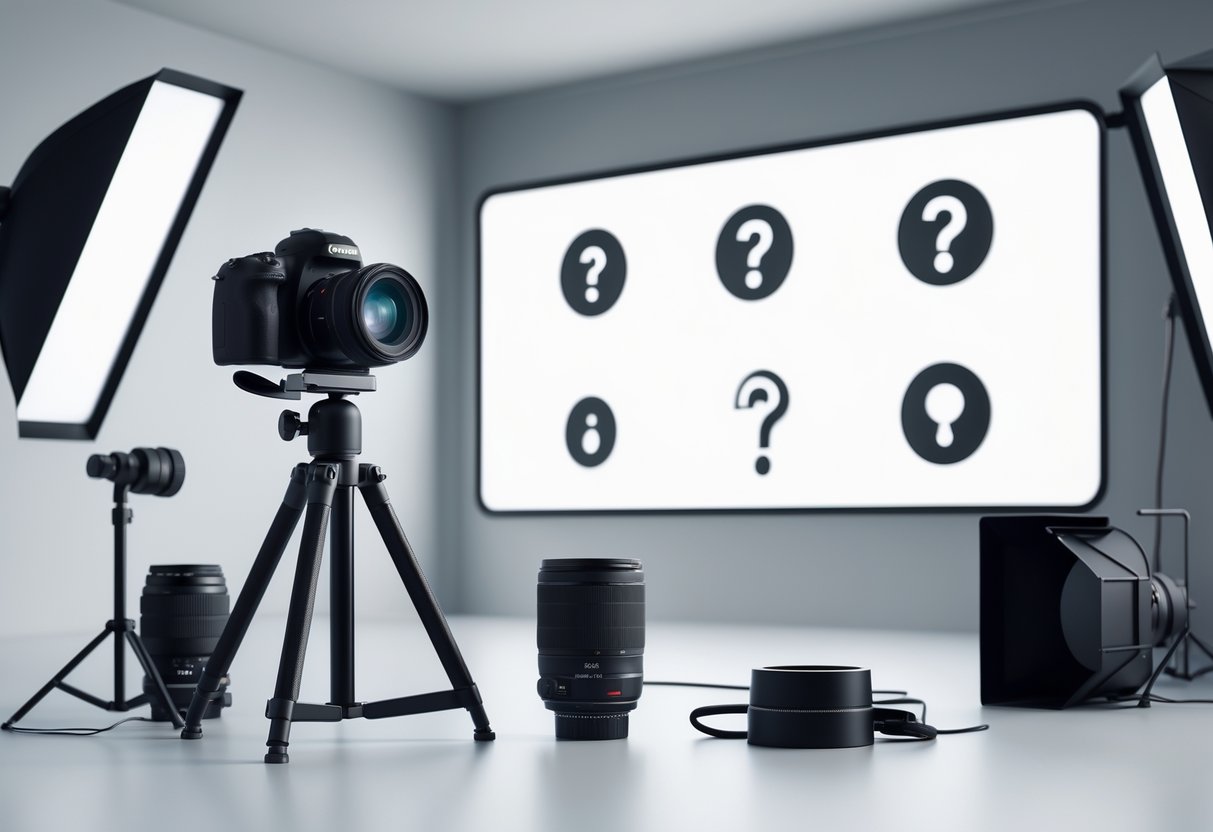
Getting press credentials and media access for photography means going through specific applications, submitting the right documents, and knowing what types of accreditation are out there from sports organisations, media outlets, and photography groups.
How can one apply for a press pass as an independent photographer?
Independent photographers need to prove their credibility before applying for press passes. Most organisations want to see proof of publication or an assignment from a recognised media outlet.
Start by building a portfolio of published work. Reach out to local newspapers, magazines, or online outlets for assignment letters. These letters show you’re working on real media coverage.
Send your application directly to event organisers or venues. Include media credentials, assignment letters, and samples of past press work. Most places have online forms posted 4-6 weeks before the event.
What steps should be taken to obtain a media pass for photography events?
Look up the specific requirements for each event or venue. Every organisation has its own deadlines, paperwork, and approval process.
Gather your documents early. You’ll need press credentials, assignment letters, portfolio samples, and sometimes insurance certificates. Being a member of a professional photography group can help.
Apply as early as possible and follow up. Many events want applications 2-8 weeks ahead of time. Keep track of your submissions and stay in touch with media coordinators.
Is there a way to secure press credentials for sports photography in particular?
Sports photography credentials usually come with the strictest requirements. Pro sports organisations want proof of regular publication and assignments from established outlets.
Start with smaller sports events to build your credentials. Local leagues, college games, and regional competitions are usually more accessible.
Join a recognised sports photography association. Groups like the Professional Sports Photographers’ Association offer credibility and networking that can lead to more credentialed gigs.
Could you guide me through creating a press pass for photography assignments?
You can’t make your own official press pass—only legitimate organisations or events can issue those. Still, you can prepare professional ID materials for assignments.
Design a photographer ID with your name, publication, and contact info. This helps in basic situations, but it won’t replace official credentials.
Work with established media outlets to get real press credentials. Assignment editors can provide official documentation or passes for specific events when you’re on assignment.
What avenues exist for joining an international photographers’ organisation?
Look into professional photography associations in your field. Groups like the British Institute of Professional Photography or International Federation of Journalists have different membership levels and perks.
Check their requirements and fees first. Most professional groups want to see your portfolio, ask for references, and charge annual fees—anywhere from £50 to £300.
Consider starting with local or national groups before jumping into international ones. Regional photography societies often help you build up to bigger networks and credential opportunities.
What are the requirements to gain official photography accreditation?
If you want official accreditation, you’ll need to show professional status and a legitimate media purpose. Accrediting bodies look for evidence that you publish regularly and actually get assignments.
You’ll want to gather things like portfolio samples, some client references, and proof that you’re affiliated with a media outlet. Most organizations also ask for proof of professional insurance and a list of your gear.
Accreditation isn’t a one-size-fits-all thing. Event passes and press credentials can be totally different, and some places just want a simple form while others put you through a pretty tough vetting process. It all depends on the organization and what level of access you’re after.

